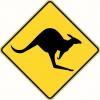This may have been asked before. I'm looking at getting a Lie-Nielsen Low Angle Jack Plane or the LN #4 Smoother. I found that both can do smoothing task and can be set up to do other task with more frogs and blades. I own the LN rabbit block plane a have enjoyed using it.
Anyone used these?




 Reply With Quote
Reply With Quote





